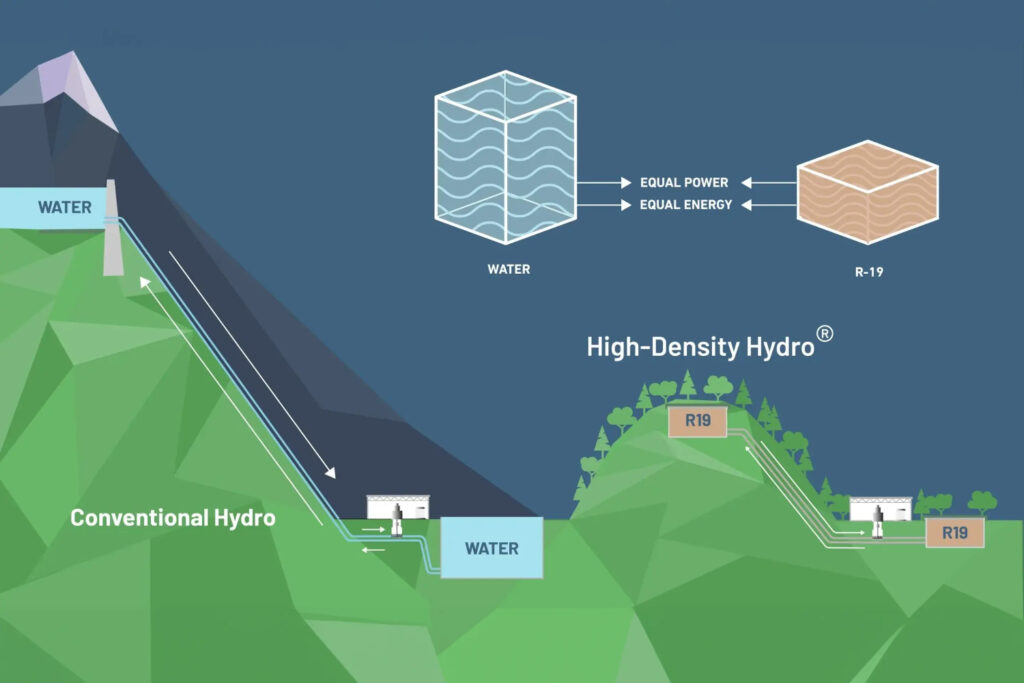In a groundbreaking initiative poised to redefine Britain’s energy landscape, innovative high-density hydropower technology is set to breathe new life into the country’s rolling hills. Gone are the days of conventional hydropower; welcome to the era of subterranean energy storage.
As the demand for sustainable energy solutions intensifies, the need for efficient energy storage becomes increasingly paramount. Enter high-density hydropower, a cutting-edge technology that harnesses the power of gravity and water to store and deliver electricity on demand. But what sets this system apart? Let’s delve into the details.

Unleashing the Power Beneath Our Feet
Traditionally, hydropower systems have relied on surface-level reservoirs and dams, often facing environmental challenges and land constraints. However, the advent of high-density hydro technology introduces a game-changing approach. By leveraging underground caverns and geological formations, this innovative system maximizes space utilization while minimizing environmental impact.
Imagine vast networks of tunnels and chambers concealed beneath the earth’s surface, silently storing immense quantities of energy. These subterranean reservoirs, carefully engineered and strategically located across Britain’s hills, serve as renewable energy batteries, ready to supply power to homes and industries alike.
The Numbers Speak Volumes
Behind this visionary concept lies a wealth of scientific rigor and engineering prowess. Consider the statistics: a single high-density hydropower facility can boast energy storage capacities exceeding traditional surface-level reservoirs by up to 50%. With efficiency rates surpassing 90%, these underground powerhouses promise unparalleled reliability and stability to the national grid.
Moreover, the scalability of this technology opens doors to unprecedented opportunities for renewable energy expansion. By tapping into the natural contours of the landscape, we unlock the potential to transform Britain’s hills into veritable energy reservoirs, capable of meeting the demands of a sustainable future.
Beyond the Surface: Environmental Implications
While the benefits of high-density hydropower are clear, it’s essential to address potential environmental considerations. Contrary to conventional wisdom, burying energy storage facilities underground offers distinct advantages in terms of land use and habitat preservation. By minimizing surface disturbance and visual impact, this approach mitigates potential ecological disruptions, ensuring harmony between nature and technology.
Furthermore, the utilization of existing geological formations reduces the need for extensive construction, minimizing carbon footprint and resource consumption. As we embrace the transition towards renewable energy, it’s imperative to prioritize environmental stewardship at every step of the journey.
Looking Ahead: Pioneering the Future of Energy
As Britain embarks on this transformative journey towards sustainable energy independence, the significance of high-density hydropower cannot be overstated. From its innovative underground infrastructure to its unparalleled energy storage capabilities, this technology heralds a new era of renewable energy innovation.
Yet, beyond the technical marvel lies a broader vision—one of resilience, adaptability, and collective progress. By harnessing the power of nature and human ingenuity, we pave the way for a brighter, greener future for generations to come.
In conclusion, as the world stands at the precipice of unprecedented environmental challenges, the imperative for sustainable energy solutions has never been more urgent. Through initiatives like high-density hydropower, we not only mitigate the impacts of climate change but also forge a path towards a more sustainable and prosperous tomorrow.
Join us as we embark on this remarkable journey, transforming Britain’s hills into renewable energy batteries and shaping a future powered by innovation and sustainability.


